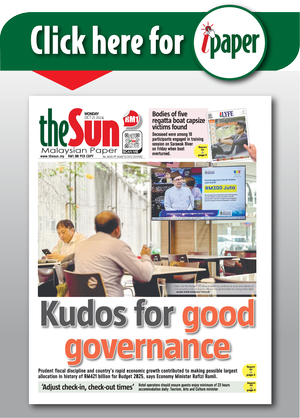PAST midnight on March 5, 2001, a youth on a motorcycle was frustrated that a road, Jalan PJS 4/27 at Kampung Lindungan, off Old Klang Road in Kuala Lumpur, was impassable to traffic.
The road was blocked by neatly arranged chairs and tables placed under a tent at a house where a wedding reception was to be held the following afternoon.
The youth chose not to turn around and take a longer route to his destination.
He decided to ride and weave past the tables and chairs, kicking and pushing them aside to make way for himself.
When the noise was heard by the house owner, whose daughter was to be married just hours later, he rushed out and chastised the biker.
The youth, who was said to be a teenager, quickly fled the scene.
Angry at being reprimanded by the man, the youth returned several minutes later with two of his friends. Armed with machetes, they confronted the man before attacking him.
On hearing his cries, several of the victim’s family members went to the man’s aid. The youths fled on their motorcycles and rode towards a group of people holding a vigil at a funeral less than a 100m away.
Presuming that the attackers were from the house where the funeral was held, a group of men went on a rampage in retaliation.
They smashed the windscreens of a car and van and set several motorcycles on fire despite pleas from the mourners.
It was 4am and it was the beginning of an incident that would be known as the Kampung Medan racial clash that drew parallels to the May 13, 1969 riots.
Although police promptly took position in the area to ensure that the wedding ceremony and funeral procession proceeded smoothly, the air was tense.
Rumours of Indians and Malays fighting spread like wildfire even before it began.
Large groups of men from the settlement incited local youths to revolt.
Within days, as government leaders called for calm, the uprising spread to neighbouring settlements and sporadic attacks occurred within and out of the areas.
Police brought in reinforcements from other states and checkpoints were set up at hotspots in the conflict zone.
Almost two weeks later, after six people were killed, about a dozen maimed and another 50 wounded, the situation was contained by police.
More than 300 people, including foreigners, were arrested on suspicion of being involved in the clashes or for spreading vicious rumours and inciting racial tension. An array of weapons mainly knives, parang and iron rods were seized.
The troublemaker was never caught and his identity remains unknown until this day.









